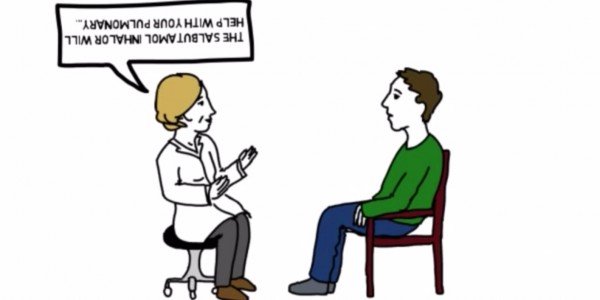Seven steps to improve your patients’ health outcomes [video]
Sixty per cent of Canadians over the age of 16, and 88 per cent of seniors, have low health literacy. This means that most patients leave their appointments without understanding what they’ve been told.
“It’s more than handing out brochures,” says Cheryl Rivard, a Patients As Partners coordinator who helped create a health literacy video for health professionals. “There are simple steps we can all take to improve our patients’ health outcomes, build better patient relationships and increase the efficiency of our entire health system.”
Health literacy is about making informed decisions and taking actions to promote and protect health. When patients or clients are health literate, they are better at making healthy lifestyle choices, communicating with health care providers and accessing information and services.
It’s becoming a larger issue as the population ages and incidences of chronic disease rise.
Watch “Health Literacy Basics for Health Professionals”
Three questions patients should ask at each appointment
- What is my main problem?
- What do I need to do?
- Why is it important for me to do this?
Seven tips to improve your patient’s health literacy
- Look for clues that your patient has low health literacy. Common signs include missed appointments, not taking medications and incomplete forms.
- Use audio-visuals, models or pictures instead of written words.
- Use demonstration.
- Highlight or circle any take-home points on written materials.
- Use plain language, explaining the most important concepts first. Speak slowly with no acronyms or jargon.
- Ask them to “teach back” what you’ve explained to them. What would they tell their family member about their appointment today?
- Encourage them to establish a support network, which could include family support, online or community resources.
What tips do you have?
What has been your experience when patients and clients have low health literacy? What strategies do you use to improve their understanding of their diagnosis, treatment and medications? Share your tips on the Up for Discussion blog!
About the video
The VCH Integrated Primary and Community Care team championed the video. The regional team encourages collaboration between family physicians and health care professionals to move us toward an integrated primary, community and acute care system. It was a partnership between VCH, the BC College of Family Physicians and the BC Ministry of Health.

